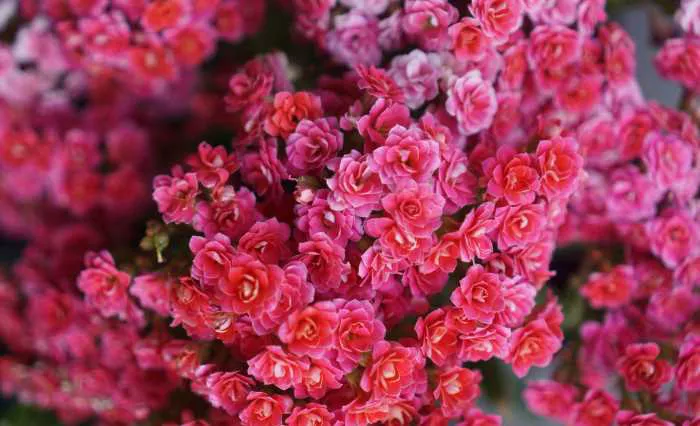Flowers have long been associated with various months of the year, often symbolizing different traits, emotions, and characteristics. Each month is typically represented by one flower, but in some cases, there are two flowers designated for a single month. This phenomenon raises questions about the reasons behind having two birth month flowers. This article will explore the origins of birth month flowers, the significance of having two flowers for certain months, and the meanings associated with each flower.
The Concept of Birth Month Flowers
The tradition of assigning flowers to each month dates back centuries. Flowers have been used in literature, art, and culture to symbolize various emotions and attributes. Each flower is believed to reflect the personality traits of individuals born in that month. The concept is similar to birthstones, which provide a gem associated with each month.
The idea of birth month flowers varies across cultures and regions. In Western culture, the modern list of birth month flowers is often derived from the American National Retail Florists Association and the meanings attributed to flowers in the Victorian era. This practice has evolved, leading to the inclusion of two flowers for some months.
Understanding the Dual Representation
The presence of two birth month flowers for certain months can be attributed to several factors. These include historical significance, regional variations, and the diverse meanings associated with different flowers. Here are some reasons why two flowers may represent a single month.
Historical Context
Historically, flowers have held different meanings across various cultures. In ancient times, certain flowers were favored for their medicinal properties, while others were cherished for their beauty or fragrance. As floral symbolism evolved, different flowers emerged to represent the same month based on regional preferences and cultural significance.
For example, the month of June is represented by both roses and honeysuckle. Roses have long been associated with love and passion, while honeysuckle symbolizes devotion and affection. The dual representation reflects the diverse emotions that can be celebrated during this month, particularly in relation to relationships and love.
Regional Variations
Different cultures and regions may have distinct flowers that hold significance for a particular month. For instance, in some cultures, one flower may be preferred over another based on local availability or traditional practices. This can lead to the inclusion of multiple flowers representing the same month.
For example, in the United States, the month of April is represented by both daisies and sweet peas. Daisies symbolize innocence and purity, while sweet peas are associated with blissful pleasure. These flowers may resonate differently with individuals based on their cultural backgrounds or personal experiences.
Diverse Meanings and Symbolism
Having two flowers for a single month allows for a broader range of meanings and symbolism. Each flower carries its unique attributes, and individuals may relate more closely to one flower than the other. This diversity can provide a more personalized connection to the concept of birth month flowers.
For instance, the month of August is represented by gladiolus and poppy. Gladiolus symbolizes strength and integrity, while poppies are associated with remembrance and consolation. This dual representation allows individuals born in August to identify with the qualities of either flower, depending on their personal experiences or values.
The Birth Month Flowers for Each Month
To provide a clearer understanding, here is a list of the months with their corresponding birth month flowers, highlighting those with dual representations.
January
Carnation and Snowdrop
Carnations symbolize love and fascination, while snowdrops represent hope and new beginnings.
February
Violet and Primrose
Violets symbolize loyalty and devotion, while primroses represent young love.
March
Daffodil
Daffodils symbolize rebirth and new beginnings.
April
Daisy and Sweet Pea
Daisies symbolize innocence and purity, while sweet peas represent blissful pleasure.
May
Lily of the Valley and Hawthorn
Lily of the valley symbolizes humility and sweetness, while hawthorn represents hope and protection.
June
Rose and Honeysuckle
Roses symbolize love and passion, while honeysuckle represents devotion and affection.
July
Larkspur and Water Lily
Larkspur symbolizes positivity and joy, while water lilies represent purity and enlightenment.
August
Gladiolus and Poppy
Gladiolus symbolizes strength and integrity, while poppies represent remembrance and consolation.
September
Aster and Morning Glory
Asters symbolize love and wisdom, while morning glories represent affection and mortality.
October
Marigold and Cosmos
Marigolds symbolize warmth and creativity, while cosmos represent harmony and order.
November
Chrysanthemum
Chrysanthemums symbolize optimism and joy.
December
Narcissus and Holly
Narcissus symbolizes respect and modesty, while holly represents protection and good fortune.
Conclusion
The presence of two birth month flowers for certain months reflects the rich cultural history and diverse symbolism associated with flowers. This dual representation allows for a broader understanding of the traits and emotions linked to each month. Whether it is the passionate rose or the devoted honeysuckle, each flower offers a unique perspective on the qualities of individuals born in that month. By understanding the significance of these flowers, we can appreciate the beauty and meaning they bring to our lives. As we celebrate birthdays and special occasions, choosing the appropriate birth month flower can add a personal touch that resonates deeply with the recipient.


